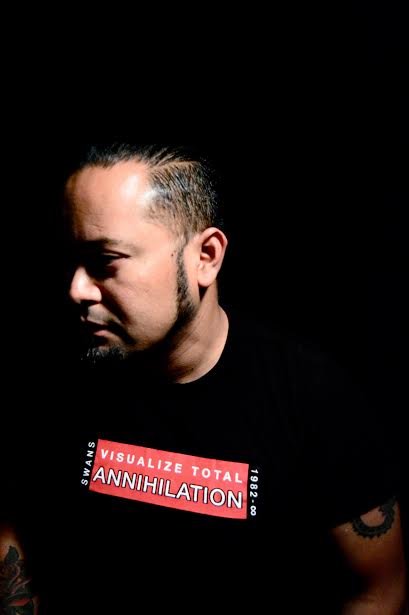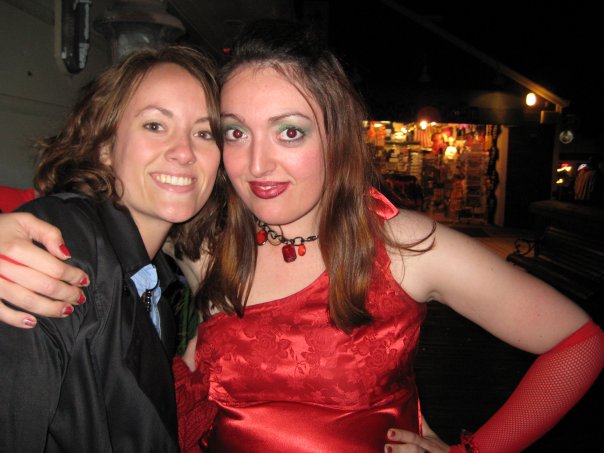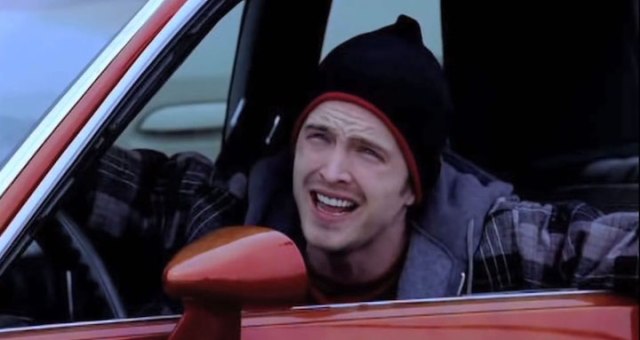Barbara Jwanouskos interviews David Molina, composer and sound designer.
I met David Molina a number of years ago when I’d first moved back to the Bay and had stumbled into doing sound tech after teaching myself how to dj. Yvette Jackson connected me when the production that David was working on needed a substitute tech for rehearsals. It was a paying gig, and I remember being like, “What? You can get money for doing this??” From just stumbling in so haphazardly into sound design, until I met Jackson and Molina, I was unaware of how much work, but how fascinating sound design could truly be. Even as a tech, it was hard not to get drawn into the world because of the sound. Anecdotally, David also had a way of documenting what he needed me to do as a tech with volume, fades, starting/stopping tracks, that was very specific using notation — it was like reading music — and it was extremely helpful in knowing exactly how the sound should be played at the specific moment in the play.
David has had his described as hauntingly beautiful, which I feel is a great description of what it’s like to hear his music, soundscapes, and creations. They are multi-layered, dense environments that draw from a wide variety of instruments, techniques, and collaborators, so that experiencing it feels very immersive.
I’ve kept up with David’s work and have been inspired by the multiple hats he wears and also how creatively productive he keeps himself. Definitely something I also aspire to strive for with my own craft. David has a couple performances coming up at the San Francisco International Arts Festival and I reached out to see if he’d be interested in an interview. I was lucky enough to catch him as he geared up for these next events. Here is the interview for your enjoyment.

David Molina
Barbara: Tell me about your background as an artist. What’s your trajectory been like? And how did you get into creating sound and music? What’s your style?
David: I am a composer, multi-instrumentalist, sound artist/designer, recording engineer, music producer, and instrument inventor. I have created music and sound design for the performing arts, film, radio, video, and multimedia installations and productions for 20 years. I have played music since I was a child, and was a classical guitarist since age 12 through my mid to late 20’s. I have always loved music soundtracks and sound design in film. As a kid I dreamed of scoring a feature sci-fi film. While studying music at Sonoma State University I got into experimental music, music of the world, and studio production. In 1996 I ended up working in theater as a complete accident when I met director Roberto Gutierrez Varea. He was teaching theater at SSU. He needed a composer for a production, but didn’t want a student composer. He wanted a pro, but there was no budget. Someone passed off a tape of the music I was making at the time and he loved it. I figured theater would be a great way to learn scoring to a story, and I could transfer my skills to film scoring. Twenty years later I have been Roberto’s main composer and designer for almost every production he directs.
Barbara: I’m curious about the many hats you wear as a composer, performer, collaborator with theater, dance and performance art. How do you approach these various roles?
David: Every gig I do is a learning experience and a chance to do something new. If I really like a project, I am down for anything as long as my schedule allows, or if the compensation is equal to the workload. So yes, time and money is a factor in how many hats I can wear in a production. I think a lot of people, even in theater do not realize how much time and work goes into even making one minute of music, or sound design from scratch. This is particularly relevant with today’s download/instant gratification culture. I have to admit I hate the term, “Sound Design” in theater, and prefer the titles, “Composer” or “Sound Artist”, because often in theater, people think a sound designer is just collecting and editing found music and sound effects. I, and many other composers I know, make everything from scratch. So it’s always a dragged when an audience or especially a cast member says “Cool sound design, whose music did you use?” All hats I wear in production get equal weight. I like my sound design to also have a music quality, or character spirit to them. If I am performing live it is a lot more work, because I have to be a rehearsals a lot more. But I can also change things on the fly and improvise more during a show. Happy accidents happen that can be reused again on another show. In film, dance, performance art, I feel there is a lot more equal value for music, and more room for experimentation. In theater, or at least in traditional text based theater, music ends up in the background and has a lower priority amongst all the theatrical elements. This also depends on the director though. I enjoy working with the ones who like to take risks, and trust in my skills and craft.
Barbara: What are you thinking about when you collaborate with other artists? For instance, performance. How are you thinking of music and sound in this context and what is that you do to make it an active element of the experience?
David: When working with people who know and trust my work, or have a history with me, it is often a free flow of ideas back and forth. With these long time collaborators it feels like we can read each other minds. Working with new directors or artists can be a little nerve wracking, because we don’t know how each other works, what we both like, or don’t like. It’s kind of like going on a blind date, but you’re stuck with them for a month or more. Trust has to be established first. I prefer to work with people who have good music tastes or vocabulary. It helps communicate ideas before going into production. I hear music and sound as the invisible character of a play, or production. It is the heartbeat, emotional/psychological landscape, and the inner spirit of the production.
Barbara: You have a couple shows coming up and I’m hoping you can talk a little about them. What are you looking forward to?
David: I produced two shows for the 100th anniversary of the DADA movement, featured at this year’s SF International Arts Festival, in Gallery 308.
The first one is Dada Explodes: A Cluster of Sound, Light, and the Absurd, on May 28 at 8:30pm. It features:
-my experimental rock band Impuritan and filmmaker Anna Geyer with sonic and visual journey through life, death, love, hate, matter, space, evolution and extinction. Impuritan’s epic compositions blend psychedelic, ambient, punk, noise, shoegaze, and surf/post/space rock. Geyer creates kaleidoscopes of color and surreal landscapes with hand-processed 16mm film loops, mixed on three projectors.
-Sound artist Loach Fillet and video artist Flower Pattern emanate a wall of throbbing sound and visuals.
-Actor/Comedian, Edna Mira Raia, hosts the evening as Hillary’s Radio Show. Audience is encouraged to wear Dada Attire or costumes.
The second show is: Duets in The Key Of DADA, on June 2, at 8pm. It is an evening of improvised duets in the spirit of DADA. Opening will be composer, electronic musician, and trumpet player, Yvette Janine Jackson, with me on electric guitar and effects pedals. Second set features me on Rusting Souls, a modified, electromagnetic hammered dulcimer while Jackson loops and sonically manipulates my performance. Closing will be the Ackamoor/Molina Duo, featuring avant-spiritual jazz saxophonist Idris Ackamoor, founder of the legendary Pyramids. The duo performs ritualistic cleansing ceremonies in the form of music and play multitude of traditional and invented instruments, which are processed with electronics.
I look forward to both shows being mind bending, trance inducing, spiritual experiences. Each in their own unique way.
Barbara: What is it like to work with Idris Ackamoor and Yvette Janine Jackson? As musicians what are you looking for in the collaboration? And then does the performance aspect figure into what develops?
David: Working with Idris is always a deep experience. I am truly humbled to be working with him musically over the past two to three years. We both come from different music backgrounds and histories, but our sets intersect in experimental, ambient, free-jazz, blues, and global ethnic and indigenous music. Audience members say our live sets are “an intense, spiritual, meditative, ritualistic, trance-inducing musical journey”. We both play a multitude of traditional and invented instruments. I loop and process our instruments using the software Abelton Live to create sparse to dense layers, which range from hauntingly beautiful and meditative, to dark and unnerving soundscapes. Ackamoor uses his array of instruments anchored by his signature alto and tenor saxophones emphasizing extended range, explosive multi-phonics, lyrical beauty, and intense “outside” playing. The combination of our vast collection of instruments and technology makes us sound like four piece band, than just a duo. Because we mostly improvise, every show we do is different. Even when we plan a skeletal map, the spontaneity takes us into unknown territory. That’s when the magic happens.
The same is true with Yvette, though we both use more electronics. I have known and performed with her since the late 1990’s. We have played all kinds of music together, especially experimental and electronic music. She has been tearing it up in the music world (see second to the last question).
I am excited, and nervous, about our collaboration as we will literally have only one day to meet before the concert. It will be very Dada improvised, but beautiful as always.
Barbara: Tell me about being an artist in the Bay Area. What makes it unique?
David: It’s tough with this entitled rich techy environment. I find myself working twice as hard now to make ends meet. SF has turned into the playland of the young and rich. It has killed our arts music scene. We have lost many venues, and a lot of great artists I know have been evicted. Fortunately Oakland has it going on, but I hear that gentrification is happening there too.
Fortunately I also do work in other cities in the U.S.
Barbara: Is there any direction that you would like to scene grow into?
David: I would like Bay Area theater to take more risks and not be so word based. Theater is a multi-dimensional beast with many moving parts and creative elements that make a script live and breathe. If one only cares about the words then you snuff out all possibilities. You might as well produce novels if the words only matter to you. I also want to see young folks and people of color in the theater. This may be due to our lack of arts in the public school systems. But theater companies need to reach out and make productions that connect with youth and P.O.C. otherwise. The scene will die with the elderly audience.
Barbara: How about you – what interests you creatively as potential next projects or influences?
David: The majority of my work addresses social justice issues: ranging from racial profiling, police brutality, migration and immigrant rights, border crossing, the U.S. prison complex, the environment, and imperialism. I also love sound as music, music which breaks genres, and stuff that is psychedelic, hits an emotional nerve, or has spiritual element. I love working on productions that blur the line of theater, dance, and film. Immersive multimedia pieces that include video, or are audience interactive are right up my alley. Finally if time and funding allows, I am always thinking of new instruments to invent.
Barbara: I’m really interested in what you said about creating work that addresses social justice issues. Out of curiosity, or maybe just speaking logistically, what are you doing with the music to reflect these issues? I’m really curious about this especially since you are not using words and I’m maybe more familiar with how one could do this with that tool.
David: In the social justice aspect, I mean the productions I work on, or collaborators I work with, address these topics. Sometimes I interview and record people who are experiencing or have experienced some kind of social oppression, and then remix them into the music. I take the interview and edit them down into sound bites, or key statements. These are then triggered on the fly in a live performance on ABLETON LIVE, or used in a sound design with pre-recorded music in QLAB.
Barbara: You also alluded to instruments you’ve created – this is so cool. Can you describe one as an example?
David: Yes, I make instruments that are made all from salvaged and found material. I go to junk yards all around the bay area, and create massive instruments that live in Gallery settings; here is snippet from my bio:
“In 2010 he began inventing instruments from salvaged and discarded materials. These became interactive, multimedia pieces displayed at SF bay area galleries and festivals, including Mcloughlin Gallery (2015); a solo exhibit, Transience: The Work of David Molina; Asterisk Gallery SF (2013); and SOMArts (2012).”

Rusting Souls II at Gallery 308
Here are links with photos and video, and descriptions of two of my instruments:
Memory Web: http://drmsound.com/memory-web
The latest is Rusting Sould II, on display at Gallery 308, Fort Mason, right now through June 5th.
Barbara: Any advice you would give to people who want to do what you do?
David: Sadly musicians can’t make a living the way we used to. Everybody wants it for free, and tech companies like Pandora and Spotify are literally stealing any royalties musicians and composers used to see. The only way to make a living is to tour, sell limited unique merch, and license your music to film or TV. I ended up doing live sound engineering, studio production, and sound design as a way to fund my artistic music endeavors. I also teach at Brava and private clients.
You got to hustle to survive in this expensive city. Don’t let anyone keep you down, or say you’re crazy. Most 9 to 5rs don’t get what it is like to be a full time artist. They think it is easy and not real work. They couldn’t handle two weeks of my busy schedule. But you got to be a little crazy to follow your passion, and make a lot of sacrifices. When it comes to theater (unless you are working with a cool director or tech staff) expect music and sound to be low on the totem pole. Any Sound Designer will tell you the same. Most people don’t realize how much work it takes to just produce one minute of music our sound.
Barbara: Any plugs for friends’ work or your own that’s coming up?
David: My band Impuritan is doing its first east coast tour from June 7 to the 18th! More info at www.impuritan.net.
Some of Yvette’s Jackson’s recent projects include: a residency at Stockholm’s Elektronmusikstudion (EMS); the premiere of This is Radio Opera at Audiorama Stockholm; Soldier, a 5-day immersive cinematic installation for the Recombinant Media Lab at Qualcomm Institute’s Calit2; and Invisible People (A Radio Opera). She was selected by the American Composers Orchestra to participate in the third Jazz Composers Orchestra Institute and awarded a reading of her composition Atlantic Crossing by the Naples Philharmonic.
Idris Ackamoor and The Pyramids, (with whom I also perform with) have just received worldwide rave reviews for their latest album “We Be All Africans”. I also contributed to the album. Some reviews are in Spin, Rolling Stone Monocle, UnCut, BBC radio, NPR, MTV, The Wire, etc.!
I also co-produced “Cuba Ra” with Idris, for Gilles Peterson’s “Rumba” remix album!
Barbara: Is there a piece or music or sound you’ve created that you’ve created that we could listen to?
David: You can listen or see my work at http://www.drmsound.com. I been so busy that I haven’t had time to update new material. The stuff on my site is about two to three years old.
David is performing this weekend at the San Francisco International Arts Festival and has other projects in the works. For more information, see his website, here.






















